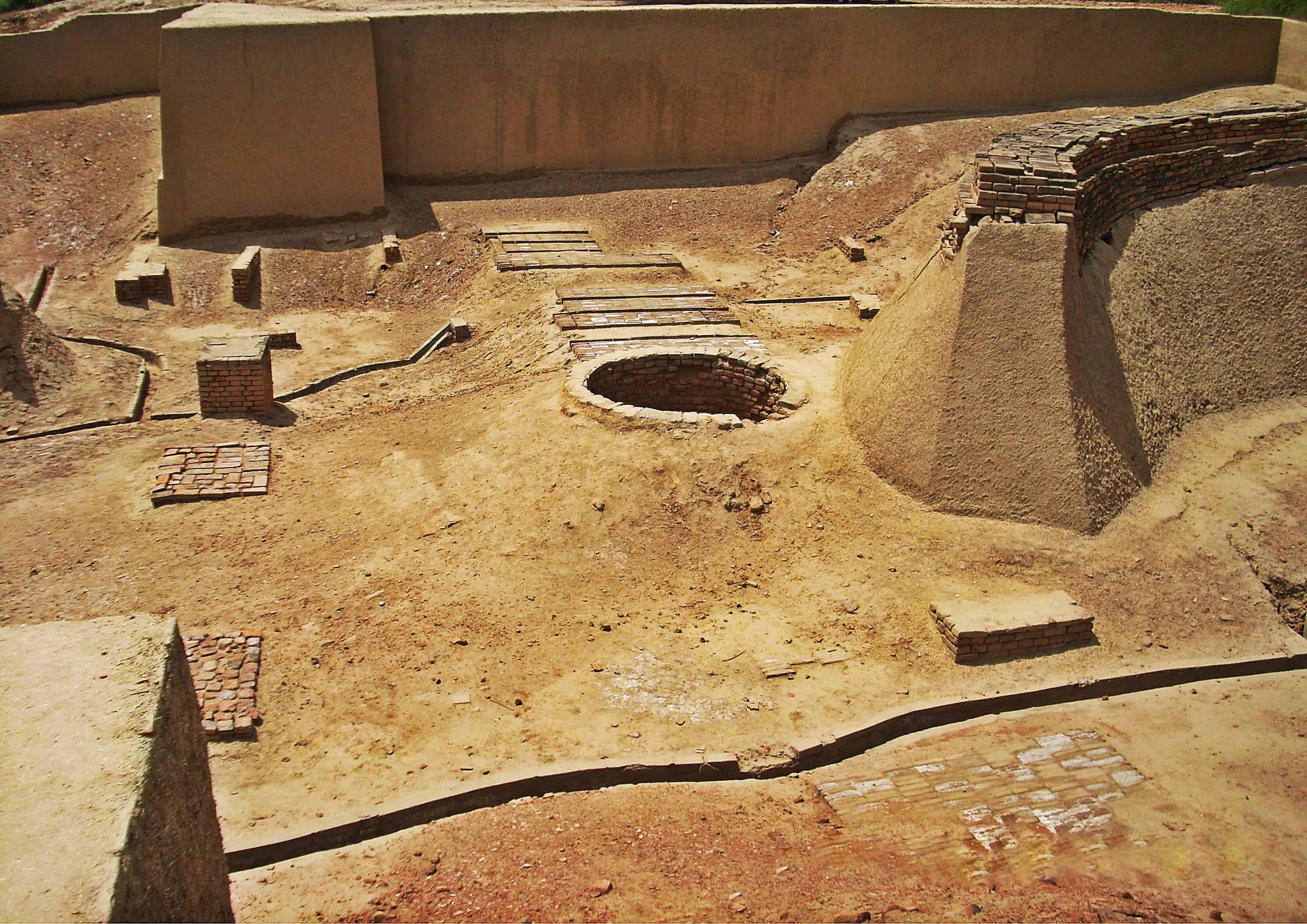
[ad_1]
Some 4,000 years ago, the Harappa culture thrived in the Indus River Valley of what is now modern Pakistan and northern India. They had big, prosperous cities, invented sewage centuries before the Romans, and established far-reaching trade routes to Mesopotamia. But in less than two centuries, their culture faded and their cities fell — and the main culprit may have been climate change.
The Indus Valley civilization was a primarily urban culture sustained by surplus agricultural production and commerce. They preferred urban settlements and built at least two major cities: Harappa and Mohenjo Daro, which were remarkably advanced for their time.
But things started to change around 2500 BCE. Shifting temperatures and weather patterns all over the Indus Valley caused a gradual dry-up of the summer monsoons, which made agriculture more and more difficult.
Liviu Giosan, a geologist at WHOI and lead author of the new paper, says this is what ultimately brought their demise and forced them to slowly retreat to smaller villages in the Himalayan foothills.
“Although fickle summer monsoons made agriculture difficult along the Indus, up in the foothills, moisture and rain would come more regularly,” Giosan says. “As winter storms from the Mediterranean hit the Himalayas, they created rain on the Pakistan side, and fed little streams there. Compared to the floods from monsoons that the Harappans were used to seeing in the Indus, it would have been relatively little water, but at least it would have been reliable.”
The end of an era
This isn’t a new theory, but evidence for these shifting patterns has been difficult to find in soil samples. So instead, Giosan and colleagues took to the ocean. They looked at microscopic fossils called foraminifera. Foraminifera are primitive “living fossils,” living from the Cambrian (542 million years ago) on to the present. They have a fossil commonly made of calcium carbonate, which means they often fossilize, especially in the environment of the Indus area. However, instead of looking for fossils, researchers looked one step deeper: they looked for DNA fragments.
“The seafloor near the mouth of the Indus is a very low-oxygen environment, so whatever grows and dies in the water is very well preserved in the sediment,” says Giosan. “You can basically get fragments of DNA of nearly anything that’s lived there.”
“The value of this approach is that it gives you a picture of the past biodiversity that you’d miss by relying on skeletal remains or a fossil record. And because we can sequence billions of DNA molecules in parallel, it gives a very high-resolution picture of how the ecosystem changed over time,” adds William Orsi, paleontologist and geobiologist at Ludwig Maximilian University of Munich, who collaborated with Giosan on the work.
This is an interesting type of indirect evidence: during winter monsoons, strong winds bring nutrients from the deeper parts of the ocean towards the surface, feeding a surge in plant and animal life — evidence of this surge is recorded in DNA sequences in sedimentary layers of the ocean floor. The DNA evidence revealed that winter monsoons seemed to become stronger, and summer monsoons weaker towards the later years of the Harappan civilization, corresponding with the move from cities to villages. It’s not clear exactly when and how quickly this process took place, but it was the end of an era.
“We don’t know whether Harappan caravans moved toward the foothills in a matter of months or this mbadive migration took place over centuries. What we do know is that when it concluded, their urban way of life ended,” Giosan says.
A lesson for today
This event signifies a very important warning for today. Unlike us, the Harappans didn’t bring this climate change on themselves — the source of this climate change actually came from very far away. A mini ice age settled in, releasing colder air from the Arctic into the Atlantic and subsequently, into northern Europe. In turn, this pushed the cold (but relatively warmer air) of northern Europe around, creating storms into the Mediterranean, which led to a surge in winter monsoons over the Indus valley — it was a remarkable series of domino pieces falling into place and sparking doom for the Harappan cities.
A similar process is happening today, and climate change is setting in motion a complex mechanism that will affect all areas of the globe.
“It’s remarkable, and there’s a powerful lesson for today,” he notes. “If you look at Syria and Africa, the migration out of those areas has some roots in climate change. This is just the beginning–sea level rise due to climate change can lead to huge migrations from low lying regions like Bangladesh, or from hurricane-prone regions in the southern U.S. Back then, the Harappans could cope with change by moving, but today, you’ll run into all sorts of borders. Political and social convulsions can then follow.”
Enjoyed this article? Join 40,000+ subscribers to the ZME Science newsletter. Subscribe now!

Source link
